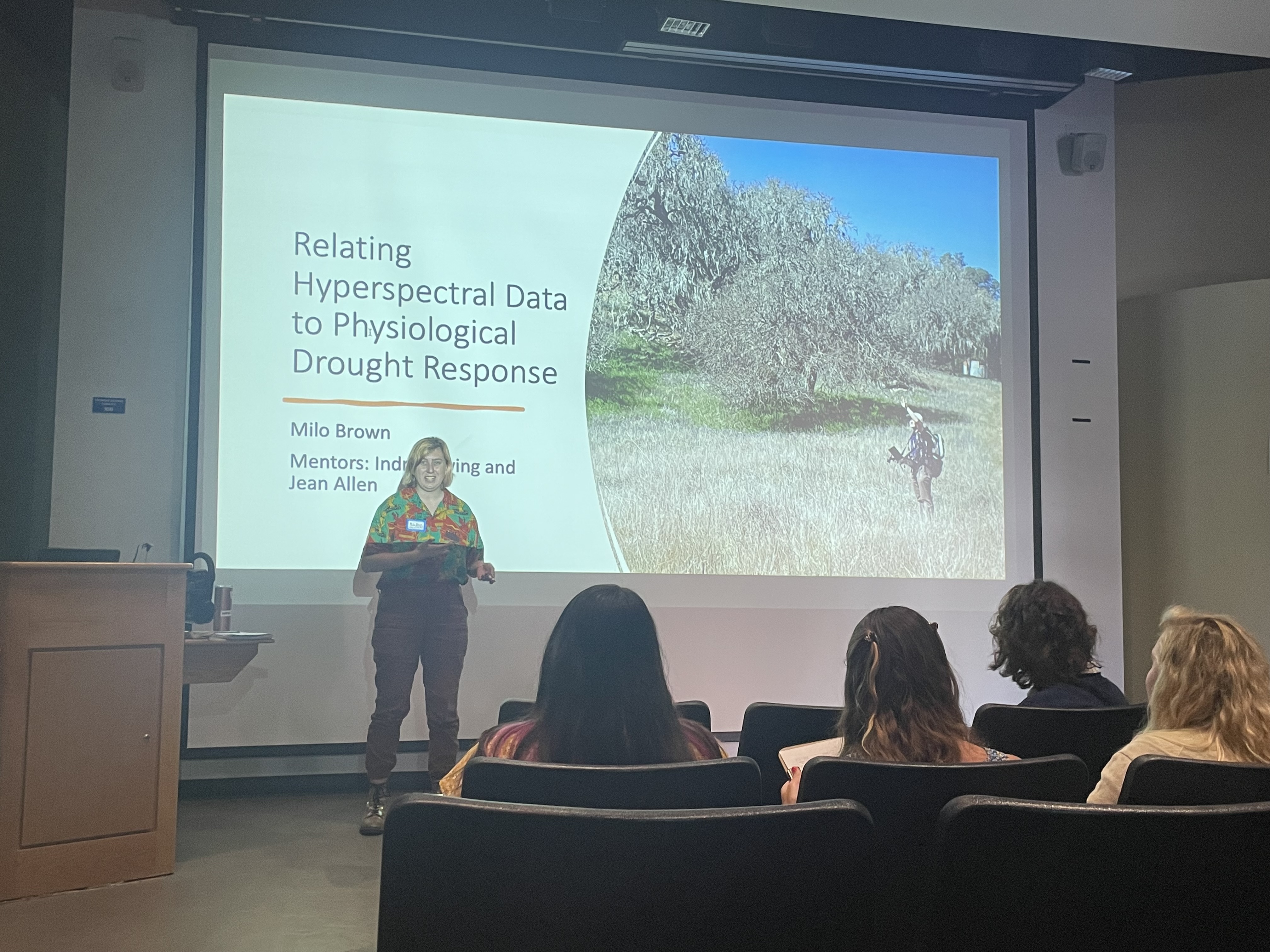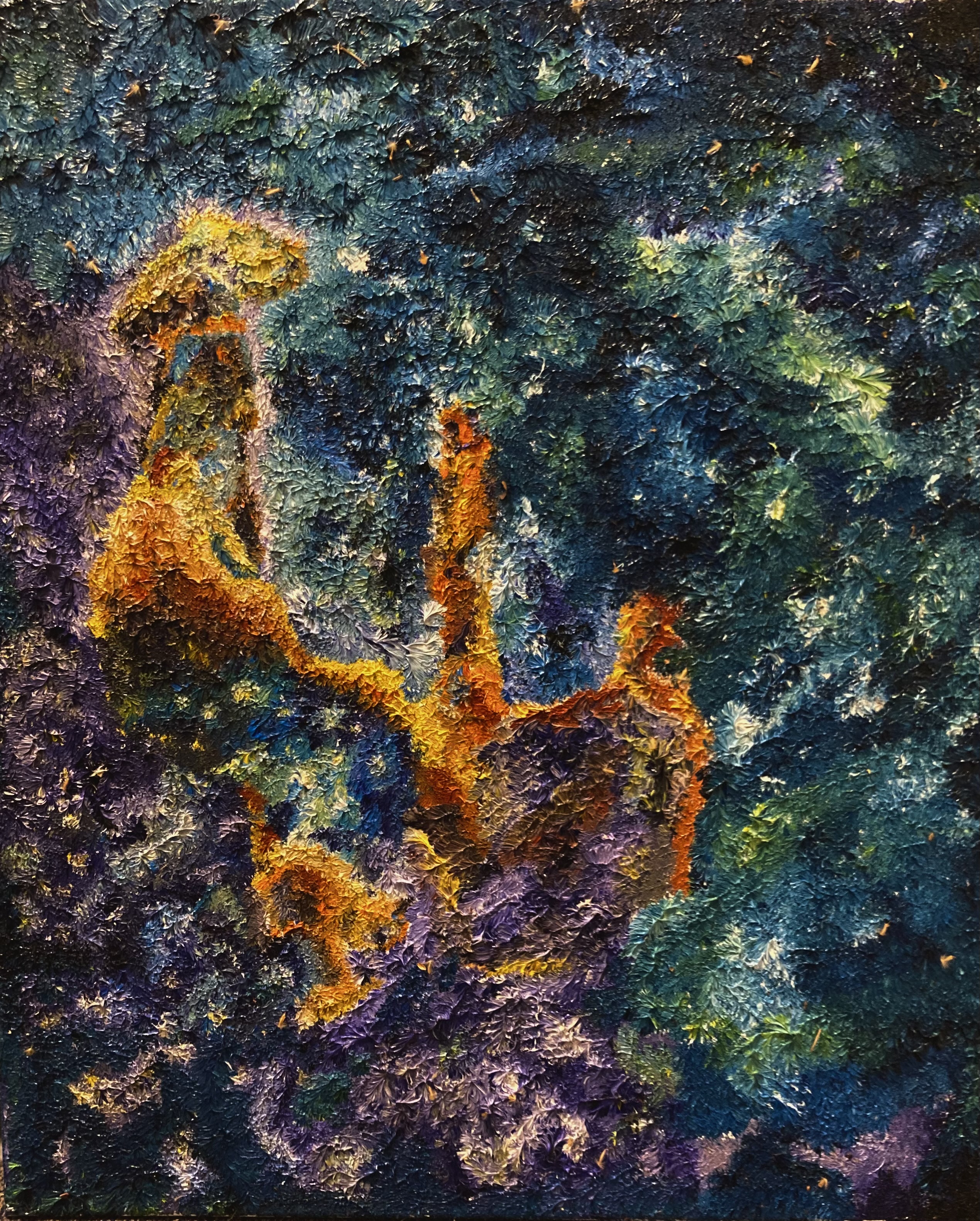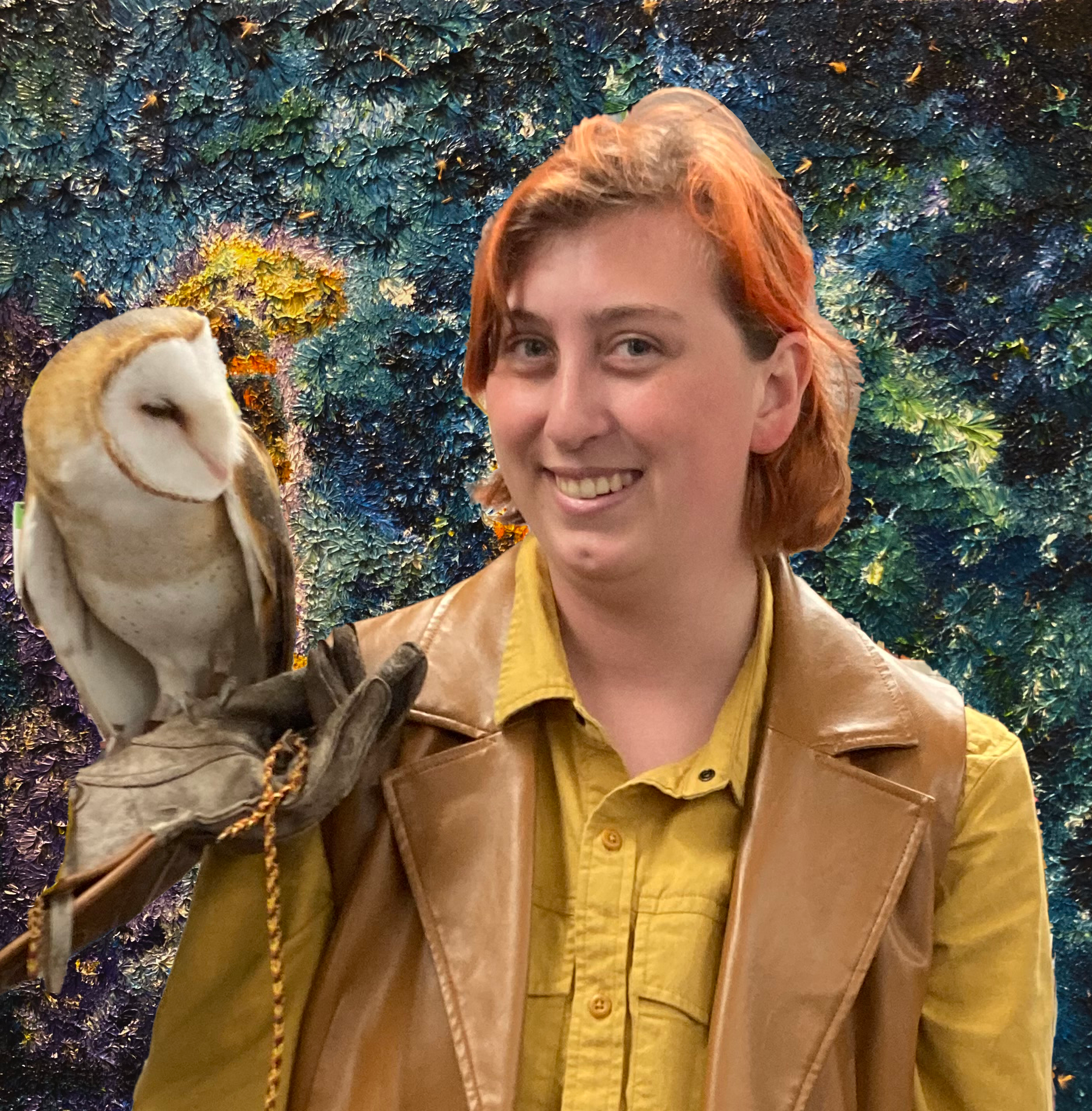4 min to read
UCSB EEMB Research Symposium 2023
Relating Hyperspectral Data to Physiological Drought Response

The UCSB EEMB research symposium showcases undergraduate research in ecology, evolution, and marine biology conducted at UC Santa Barbara. The event occured on April 22, 2023 from 9AM to 6PM. Here, I presented some preliminary research on leaf-level spectral analysis of drought adaptations in local populations. My mentors for this project include Indra Boving from the Anderegg Landscape Physiology Lab and Jean Allen from the Trugman Geography Lab and the UCSB VIPER Lab.
With nearly 50 undergraduate presenters, the EEMB Undergraduate Research Symposium was a bustling success! Every presenter did extremely well, and many of us walked away with not only an improved understanding of the active Ecology research at UCSB, but also new friends.
In the following paragraphs, I will describe the content of my presentation and discuss my overall performance.
Abstract
Hyperspectral remote sensing data has the potential to expand our understanding of ecosystem function and processes, such as drought response in California’s forested ecosystems. However, efforts to bridge established ecological fieldwork for understanding drought response and hyperspectral data products are still in progress. This project relates leaf-level hyperspectral measurements to physiological drought response using newly-developed spectral pressure-volume curves. In plant physiology, pressure-volume measurements are a physiological technique used to understand drought stress by quantifying the relationship between leaf water content and water potential. Leaf-level spectroscopy, meanwhile, allows us to observe characteristics of water content: an object will reflect, absorb, and transmit light differently at different wavelengths depending on its composite materials and structure, and water inside leaves appears as water absorption features in the near infrared. These features scale depending on the water content of the leaf. Here, we relate these water absorption features to pressure-volume curves by taking co-occuring measurements of water potential, water content, and leaf spectra. This study compares spectral pressure-volume curves of leaves from local tree species to determine spectral sensitivity to changes in water content across different species and to develop a spectrally-based understanding of tree-level drought response. Our goal is to relate water content to water potential and turgor loss point (an important physiological drought-response trait) across multiple species, providing leaf-level data from which to scale up to landscape level measures of drought response.
Methods
The pressure volume measurements quantify the relationship between leaf water content and water potential. We measured the change in water potential for a drying leaf using a water potential pressure chamber over the course of several hours. At the same time, we measured mass using a precise scale and spectral index using the ASD FieldSpec spectrometer. We used the spectral data to compare the thickness of the spectral water absorbtion features at different water content and water potential values. These coincident measurements allow us to compare water potential with spectral features, with the goal of simplifying the intensive water potential measurement process using remote sensing.
Preliminary Results
Our preliminary results from the Holly Oak outline a promising direction for this project. The data matches the theoretical expectations of a linear relationship between water absorbtion feature thickness and water content and a non-linear relationship between spectral features and water potential. This allows us to define the impact of water loss via spectroscopic measurements; a key step in relating drought stress to hyperspectral data.
Discussion
Although this work is a foundational step towards relating drought stress to hyperspectral data, relating leaf-level spectra to physiological drought stress provides only one piece of the puzzle. Canopy level spectroscopy provides additional challenges because multiple layers of leaves complicate the spectral data. We plan to connect our data to canopy level spectroscopy when we analyze our data. Many researchers, including my mentors in the geography department, are working towards bridging the gap between leaf-level and canopy-level spectroscopy.
Next Steps
I plan to analyze spectral pressure volume data from local species with different levels of drought adaptation. Our target species include the riperian frémont cottonwood, coastal live oak, some species of citrus, either river redgum or eucalyptus globulus, and potentially blue oak from sedgewick.
Acknowledgements
I would like to thank Jean Allen and Indra Boving for their wonderful support and mentorship. I would also like to thank Evan Margiotta from the UCSB Geography Department for agreeing to help as a mentor for this project going forward, especially during the summer of 2023. Additional thanks to Dr. Leander Anderegg and Dr. Anna Trugman for supporting the development of this project in countless ways, and to Dr. Dar Roberts for mentoring Jean Allen. I would also like to thank the Schmidt Family for supporting this project financially through the Schmidt Environmental Solutions Summer Research Mentorship Award during the summer of 2023.
Presentation
The reviewing graduate students agreed that my strongest points included content, interactions, and grammar/mechanics, while my weakest point was conceptual organization. Going forward, I can improve the organization of my presentations by receiving feedback during planning stages. I connected well with the audience by using the entire space, making eye contact, and using props (e.g., a large leaf) to illustrate key points. Below are the slides I used in my 8 minute presentation.

